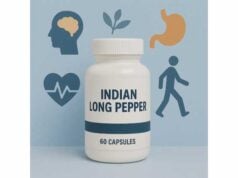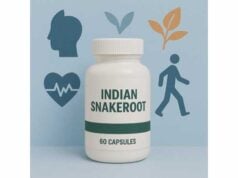
Indian valerian (Valeriana jatamansi, formerly V. wallichii) is a Himalayan valerian species used across Ayurveda, Siddha, and traditional Chinese medicine for sleep, anxiety, and nervous system balance. Its aromatic rhizome carries a distinctive profile of iridoids, valepotriates, lignans, and sesquiterpenes that act on GABAergic, monoaminergic, and stress-response pathways. Compared with the European species (Valeriana officinalis), Indian valerian is chemically distinct yet serves related calming purposes, often delivered as powder (churna), decoction, or standardized extract. Modern lab and animal studies suggest sedative, anxiolytic, antidepressant, and neuroprotective actions; small human trials exist, but robust clinical evidence is still limited. This guide translates the tradition and the science into practical steps: what to expect, how to use it, realistic dosage bands, safety guardrails, and what the research actually shows—so you can make informed, measured choices.
Essential Insights
- Best-supported uses are sleep promotion and anxiety relief, with effects most noticeable when taken nightly for 2–4 weeks.
- Practical daily ranges: 1–3 g rhizome powder, 50–100 ml decoction, or ~250–500 mg extract; start low and build gradually.
- Side effects are usually mild (drowsiness, GI upset), but excessive doses can cause next-day sedation or lightheadedness.
- Avoid during pregnancy and lactation, and use medical guidance if you have liver disease, take CNS depressants, or operate machinery.
Table of Contents
- What is Indian valerian?
- Does it work? Benefits and limitations
- How to use it: preparations and stacking
- Dosage: how much and when
- Side effects, precautions, who should avoid
- Evidence: what the research says
What is Indian valerian?
Indian valerian is a perennial valerian native to Himalayan regions from Pakistan and India to Nepal, Bhutan, and southwestern China. You may see it labeled as Valeriana jatamansi, Valeriana wallichii, or simply Tagara/Tagar in Ayurveda and Zhi zhu xiang in Chinese materia medica. It is related to but distinct from Valeriana officinalis, the European valerian commonly featured in Western supplements.
Plant parts and constituents. The medicinal part is the rhizome and roots. Key compounds include:
- Iridoids (e.g., valepotriates and their derivatives) that may contribute to sedative and neurotropic effects.
- Sesquiterpenes (e.g., valeranone-like molecules, jatamansone-type constituents) with calming and spasmolytic activities.
- Lignans and flavonoids that can modulate inflammation, oxidative stress, and neurotransmission.
- Volatile oils (the aroma that signals quality), used in perfumery and traditional calming remedies.
How it differs from European valerian. Although both are “valerians,” the chemical mix and ratios differ. Indian valerian tends to have a stronger essential oil profile and a somewhat different iridoid makeup. That means research on European valerian suggests plausible mechanisms but cannot be assumed identical. Where possible, look for data specific to V. jatamansi.
Traditional use patterns.
- Ayurveda: Vata-calming nervine for sleeplessness, restlessness, palpitations, and spasmodic states; also used in compounded formulas for mental clarity and mood.
- Tibetan and folk traditions: Sedative, digestive carminative, and incense.
- Chinese medicine: Root and rhizome (Zhi zhu xiang) used to calm the spirit, ease tension, and harmonize the gut–brain axis.
Quality and sustainability. Wild-harvest pressures have threatened related alpine aroma herbs; seek cultivated sources or suppliers that document sustainable harvesting. Good-quality rhizome is aromatic, brownish, and not musty. Standardized extracts list a marker range (often for valepotriates or total iridoids) and batch testing for contaminants.
What it is not. Indian valerian is not Nardostachys jatamansi (spikenard), a different species historically used for perfume and rituals. Some traditional clinical papers compare Tagara (Indian valerian) with Jatamansi (spikenard) for insomnia—useful context, but be clear which plant is in your product.
Bottom line. Indian valerian sits at the intersection of tradition and modern neuropharmacology. It is best framed as a gentle nightly ally for sleep onset and pre-sleep anxiety, with additional promise for stress-related symptoms, pending larger, controlled trials.
Does it work? Benefits and limitations
Sleep onset and quality. Many users report easier sleep initiation and fewer nocturnal awakenings after one to two weeks of nightly use. The effect profile is subtle rather than knockout—think smoother transition to sleep, not heavy sedation. Laboratory studies show actions that are consistent with this: modulation of GABA-A signaling, gentle muscle relaxation, and reduced arousal. In small clinical studies and traditional practice audits, Indian valerian improves subjective sleep scores; however, study designs vary, sample sizes are small, and blinding is uncommon. It is reasonable to expect modest benefits in sleep latency and perceived sleep quality, particularly in stress-related insomnia.
Anxiety and stress reactivity. Preclinical work demonstrates anxiolytic-like behavior changes in recognized animal models, alongside shifts in monoamines (serotonin, dopamine, norepinephrine) and HPA-axis mediators (corticosterone, ACTH). Users often describe a calmer pre-sleep window and fewer worry loops. In human settings, early data—mainly small trials or comparative Ayurvedic studies—suggest reductions in anxiety symptoms, but we need more rigorous randomized, placebo-controlled studies to map effect sizes and populations who benefit most.
Mood and cognitive resilience. Iridoid-rich extracts in animals show antidepressant-like activities and neuroprotective signals (reduced neuroinflammation, oxidative stress, and glutamate excitotoxicity). Translating these to clinical outcomes will require trials with validated mood scales and objective biomarkers. For now, any mood benefits should be considered secondary to better sleep and lower physiological arousal.
Digestive and spasmolytic effects. Traditional use includes colicky discomfort and functional dyspepsia. Smooth muscle relaxation observed in vitro supports a mild spasmolytic role, which could contribute to body-level unwinding that helps sleep.
Who tends to benefit most.
- Sleep-onset insomniacs with racing thoughts and somatic tension.
- Stress-sensitive sleepers where rumination and hyperarousal preempt deep rest.
- Individuals seeking a gentle botanical to pair with sleep hygiene before escalating to stronger agents.
Limitations to know.
- High variability across preparations (powder vs. ethanolic extract, fresh vs. aged rhizome).
- Sparse modern, large-scale human trials specific to V. jatamansi.
- Response heterogeneity: some get clear benefit; others feel little beyond mild relaxation.
- Sedation potential at higher doses; morning grogginess can occur if timing or dose is off.
Realistic expectations. Treat Indian valerian as a routine-builder. Combine it with consistent sleep and light habits (dim lights at night, morning daylight, caffeine cutoffs, and a wind-down routine). Expect incremental improvements over 2–4 weeks, then reassess objectively (sleep diary or tracker) to verify benefit.
How to use it: preparations and stacking
Common preparations.
- Powder (churna): Finely milled rhizome, taken in warm water or milk about 30–60 minutes before bed. Advantages are simplicity and traditional dosing flexibility; taste is earthy, aromatic.
- Decoction: Simmered root/rhizome pieces; yields a broader spectrum of water-soluble constituents. Typical serving is 50–100 ml in the evening.
- Standardized extract (capsules or tablets): More convenient, less odor, and consistent batch markers (e.g., total iridoids/valepotriates). Often 250–500 mg per serving.
- Tincture: Hydroalcoholic extract (e.g., 1:3 or 1:5); doses vary by manufacturer.
- Aromatics: The essential oil is sometimes used topically or in diffusion; this is not a substitute for internal dosing but can complement a pre-sleep ritual.
A practical evening routine (example).
- Wind-down trigger (T−60 min): Dim lights, stop email, set room to cool.
- Indian valerian (T−45 min): 1–2 g powder in warm milk or 250–500 mg standardized extract with water.
- Breath and stretch (T−30 min): 10 minutes of slow nasal breathing or gentle stretches; pair with aromatics if you enjoy them.
- Tech boundary (T−20 min): Park screens; switch to paper or a low-stimulation audiobook.
- Lights out (target bedtime).
Stacking thoughtfully.
- With magnesium glycinate or taurinate (night): Can enhance relaxation for tense sleepers.
- With L-theanine (early evening): Smooths cognitive over-activation without sedation.
- With glycine (3 g at bedtime): May deepen perceived sleep quality for some.
- With ashwagandha (day or early evening): Stress resilience; avoid if ashwagandha overstimulates you.
- With European valerian: Usually not necessary; they overlap. If you trial both, avoid concurrent high doses to limit excessive sedation.
What to avoid.
- Alcohol close to bedtime (disrupts sleep architecture).
- Overlapping sedative botanicals or CNS depressant medications without clinician oversight (risk of additive sedation).
- Inconsistent timing: for evaluation, take it nightly at the same time for at least two weeks.
Quality tips.
- Prefer products from cultivated sources with identity testing (botanical and chemical).
- Check for contaminant testing (heavy metals, microbes).
- If odor is overly stale or moldy, discard the powder.
Travel and shift work.
- For jet lag or rotating shifts, begin 2–3 nights before schedule shifts; anchor dosing to the target bedtime in the new time zone. Pair with morning bright light and evening light restriction to help the circadian transition.
Dosage: how much and when
Because preparations differ, match the dose to the form and your goal. Start at the low end, hold for several nights, then titrate.
Typical adult ranges (evening use unless noted):
- Powder (churna): 1–3 g once nightly, mixed with warm water or milk. Sensitive users can start at 500 mg–1 g.
- Decoction: 50–100 ml 30–60 minutes before bed.
- Standardized extract: 250–500 mg once nightly; some products advise twice daily for daytime anxiety (morning and evening), but avoid late-evening redosing if it causes morning grogginess.
- Tincture: Follow label; often equivalent to 1–2 ml 30–45 minutes before bed.
Timing by goal.
- Falling asleep faster: Take 30–60 minutes before lights out.
- Night-time awakenings: Try splitting the dose—half 60 minutes before bed, half right at lights out.
- Daytime tension: If non-sedating for you at low amounts, consider small morning dose (e.g., 250 mg extract or 0.5–1 g powder). Evaluate alertness impact first on a non-critical day.
Four-week titration plan (example).
- Week 1: 1 g powder or 250 mg extract nightly. Track sleep latency and wake after sleep onset.
- Week 2: Increase to 2 g powder or 500 mg extract.
- Week 3: Maintain dose; if morning grogginess appears, move earlier by 15–30 minutes or reduce by one step.
- Week 4: Keep steady. If no measurable benefit across two weeks at a tolerated dose, it may not be the right fit.
Upper limits and duration.
- Many tolerate up to 3 g powder nightly or 1,000 mg extract in divided doses, but higher amounts increase odds of next-day sedation or GI upset.
- Continuous nightly use for 6–8 weeks is common in traditional programs, followed by a 1–2 week break to reassess.
Special situations.
- Older adults: Start low (e.g., 500 mg powder or 150–250 mg extract) to minimize dizziness risk.
- Liver concerns: Use only with clinician guidance and favor standardized products with clear quality testing.
- Polypharmacy: Space at least 2 hours from other sedatives and discuss with your prescriber.
Kids and teens.
- Prioritize sleep hygiene first. If a clinician recommends Indian valerian, pediatric doses are proportionally smaller and individualized; do not extrapolate adult tincture volumes.
What if you already take a sleep aid?
- Non-sedating supplements (e.g., magnesium glycinate) can often coexist.
- For prescription hypnotics, antidepressants, or anxiolytics, involve your clinician to avoid additive sedation and to coordinate any tapering plans.
Side effects, precautions, who should avoid
Common, usually mild:
- Drowsiness or morning grogginess, especially at higher doses or if taken too late.
- Digestive upset (nausea, loose stools, or stomach heaviness) in sensitive users.
- Headache or lightheadedness if blood pressure trends low or if combined with other sedatives.
Less common:
- Vivid dreams or altered dream recall.
- Paradoxical stimulation (rare): if you feel wired, reduce dose or switch form.
Interactions to consider:
- CNS depressants: Alcohol, benzodiazepines, sedative antidepressants, sedating antihistamines, opioids—there is potential for additive sedation and impaired coordination.
- Anesthesia and procedures: Stop 7 days before elective procedures unless your doctor advises otherwise.
- Hepatic load: Complex botanicals add metabolic demand; consult your clinician if you have liver disease or elevated liver enzymes.
Who should avoid or seek medical advice first:
- Pregnancy and lactation: Avoid due to limited safety data.
- Children: Use only under professional guidance.
- Severe sleep apnea: Sedatives can worsen nighttime hypoventilation; manage apnea first.
- Bipolar spectrum or severe depression: Any sedative can mask symptoms; coordinate with a mental health professional.
- Occupational safety needs: Pilots, machine operators, or anyone requiring rapid reflexes should test on non-critical days and avoid late-night redosing.
Allergy and sensitivity. Rare true allergies occur; discontinue if you develop rash, swelling, wheeze, or severe GI symptoms.
Responsible use checklist.
- Start low, standardize timing, track effects for two weeks.
- Avoid mixing with alcohol near bedtime.
- Lock in sleep hygiene (consistent schedule, light discipline, caffeine cutoffs).
- Reassess benefit versus side effects monthly; do not chase effects by stacking multiple sedatives.
Evidence: what the research says
Phytochemistry and mechanisms. Contemporary reviews of Valeriana jatamansi catalog more than 400 compounds, dominated by iridoids, sesquiterpenes, lignans, and phenolics. Mechanistic threads relevant to sleep and anxiety include:
- GABA–A receptor modulation and mild skeletal muscle relaxation.
- Monoaminergic tuning, with shifts in serotonin, dopamine, and norepinephrine in stress models.
- HPA-axis modulation with reductions in corticosterone or ACTH in animals, consistent with lower stress reactivity.
- Neuroprotection via anti-inflammatory, antioxidant, and anti-excitotoxic actions (e.g., glutamate balance).
Human data snapshot.
- Insomnia: A small comparative Ayurvedic study in primary insomnia reported improvements in sleep initiation and duration with Indian valerian powder over one month; spikenard also helped, but the Indian valerian arm performed better on several endpoints. The study was small and not tightly blinded.
- Stress and mood: Clinical-grade trials specific to V. jatamansi remain limited; however, extracts show encouraging changes in preclinical anxiety and depression models, lending biological plausibility.
- PTSD-like states (preclinical): An ethanolic extract improved behavioral and biochemical markers in a validated mouse PTSD model, with network analyses pointing to neurotransmitters, HPA-axis, and endocannabinoid pathways.
Dosing guidance and tradition. The Ayurvedic Pharmacopoeia and modern pharmacognosy sources consistently place the powder dose around 2–3 g/day for adults, with decoction volumes of 50–100 ml and extract doses scaled accordingly. Contemporary practice often consolidates this into 1–3 g once nightly for sleep, or 250–500 mg extract.
Gaps and future needs.
- Larger, placebo-controlled human trials that use standardized extracts, validated sleep and anxiety scales, and objective endpoints (actigraphy, polysomnography where feasible).
- Pharmacokinetics and quality control standards that map specific markers (e.g., total iridoids) to clinical effects.
- Head-to-head studies versus European valerian and versus non-sedating sleep supports (e.g., cognitive–behavioral strategies) to define best-fit contexts.
Practical takeaway. The scientific arc favors a cautiously optimistic view: Indian valerian is mechanistically plausible, traditionally validated, and increasingly characterized. Given the small-scale human data, use it as a low-risk adjunct to structured sleep and stress programs, tracked with objective measures to confirm personal benefit.
References
- Research progress in the ethnopharmacology, phytochemistry, pharmacology, toxicology, and quality control of Valeriana jatamansi Jones (2024) (Review)
- Valeriana Jatamansi: An Overview of Phytochemistry, Pharmacology, Clinical Prospects, and Network Analysis of Drug Targets (2025) (Review)
- A comparative clinical study on the effect of Tagara (Valeriana wallichii DC.) and Jatamansi (Nardostachys jatamansi DC.) in the management of Anidra (primary insomnia) (2015) (Clinical Study)
- Impact of a Novel Valerian Extract on Sleep Quality and Salivary Biomarkers of Stress in Healthy Adults with Mild Insomnia: A Randomized, Double-Blind, Placebo-Controlled Clinical Trial (2024) (RCT; general valerian context)
- Central nervous system depressant activity of Jatamansi (Nardostachys jatamansi DC.) rhizome (2022) (Preclinical; cites human powder dose range)
Disclaimer
This guide is educational and not a substitute for personalized medical advice, diagnosis, or treatment. Always consult a qualified healthcare professional before starting Indian valerian, especially if you are pregnant or breastfeeding, have liver disease, obstructive sleep apnea, depression or bipolar disorder, or take sedatives, sleep medications, or alcohol. Stop use and seek medical care if you experience persistent dizziness, severe GI symptoms, allergic reactions, or concerning mood changes.
If you found this article helpful, please consider sharing it on Facebook, X (formerly Twitter), or your preferred platform, and follow us for future updates—your support helps us continue creating balanced, evidence-informed guides.










